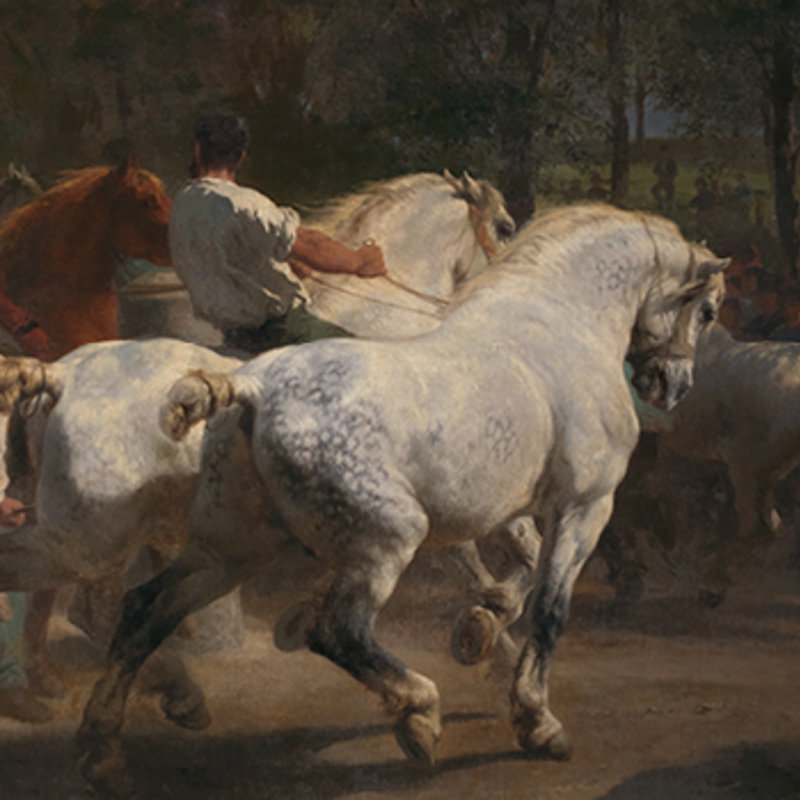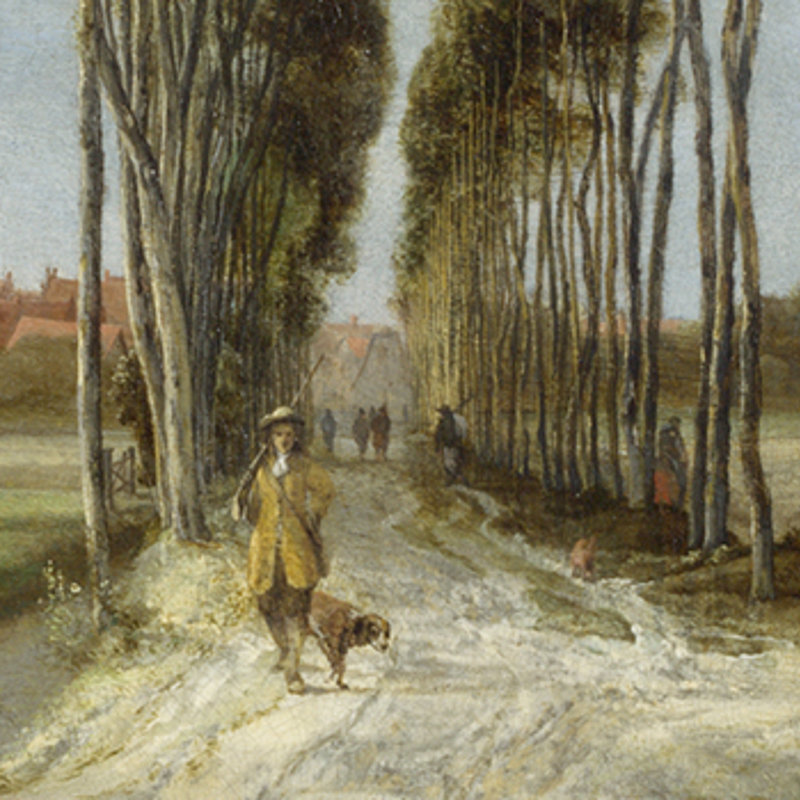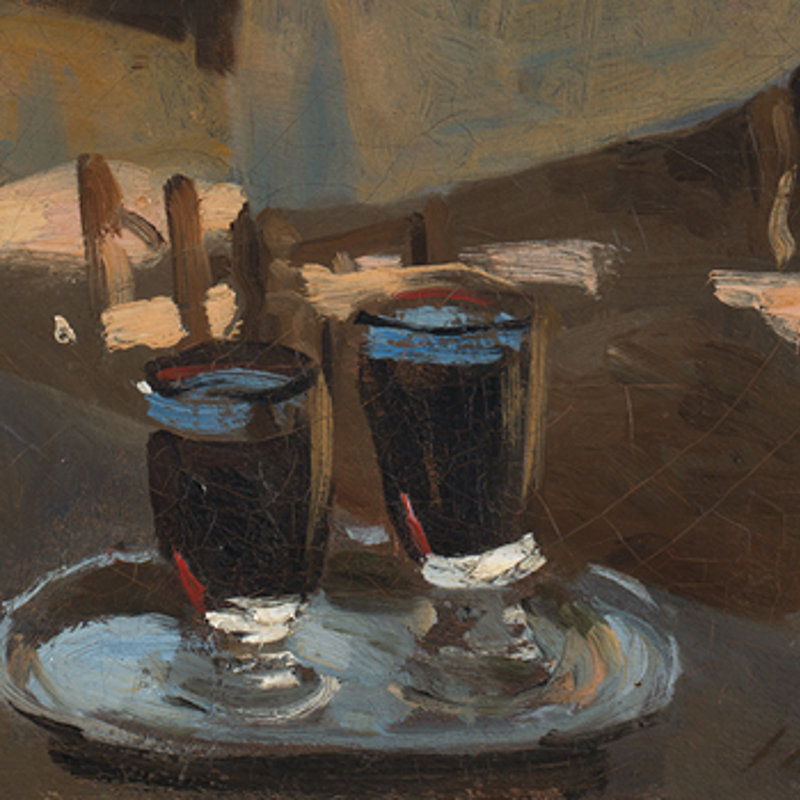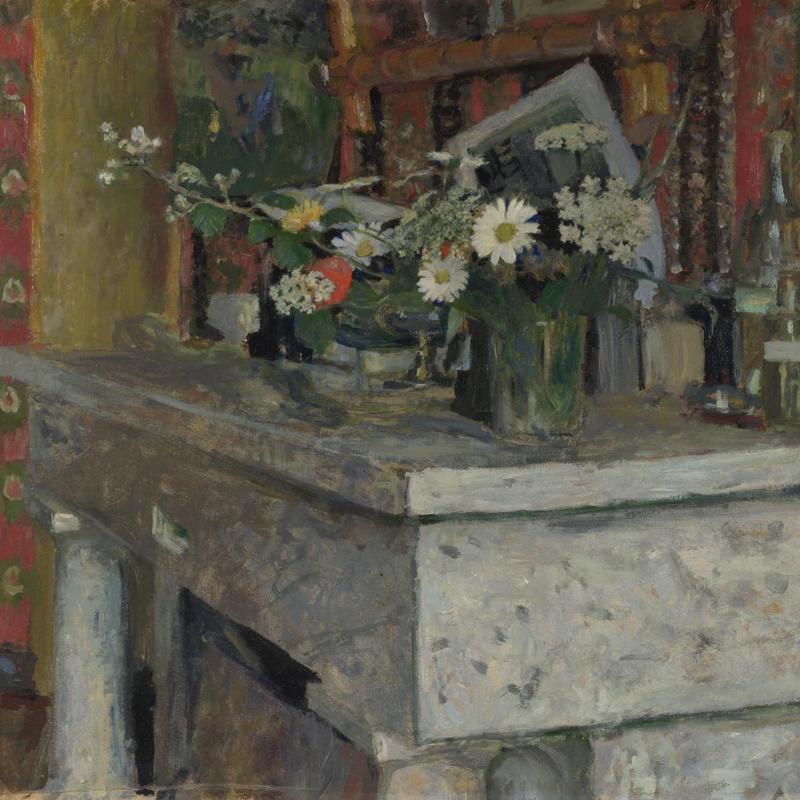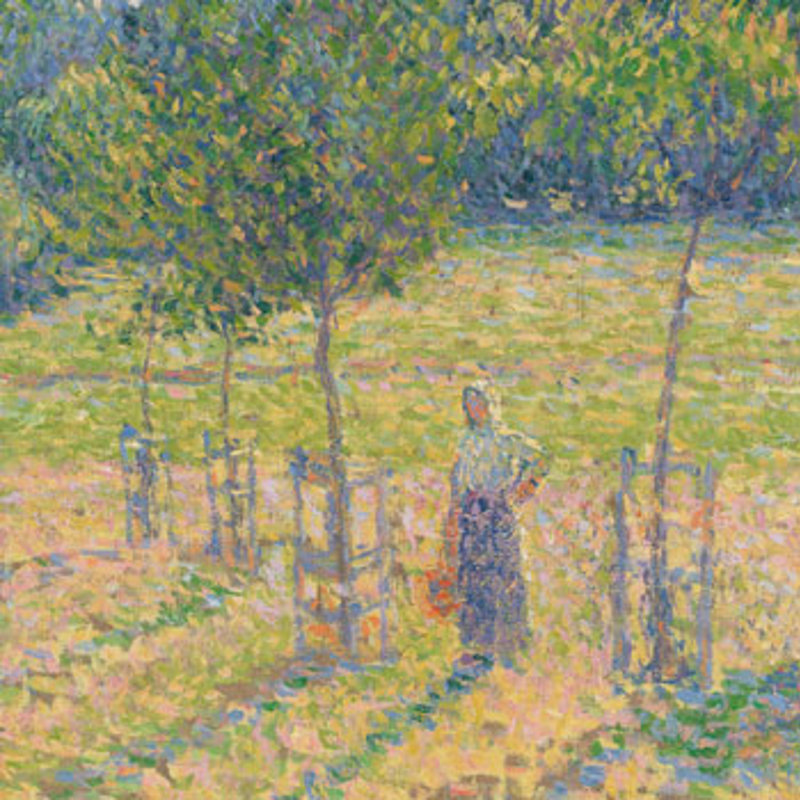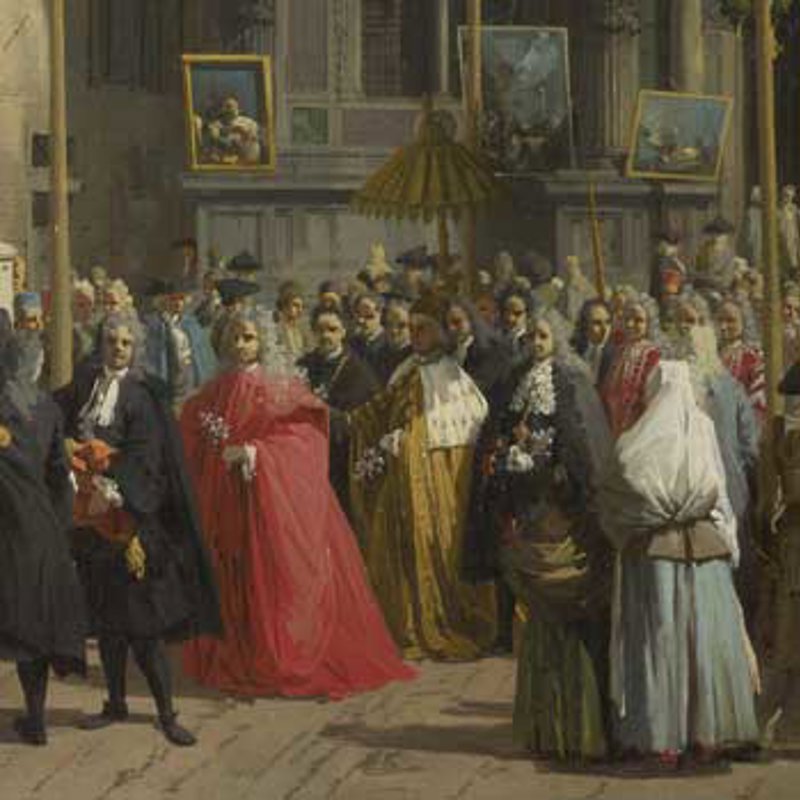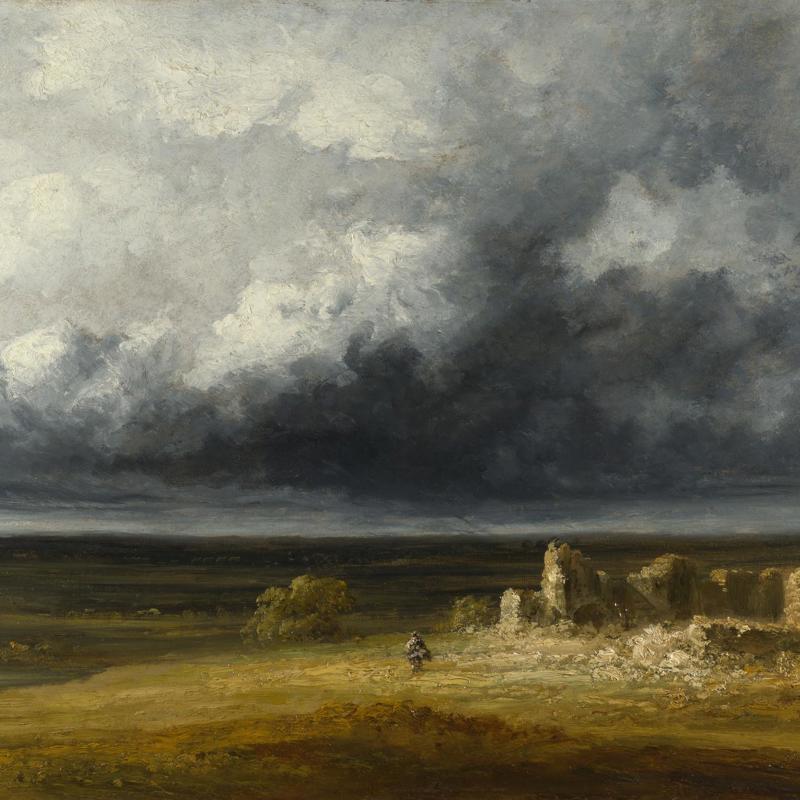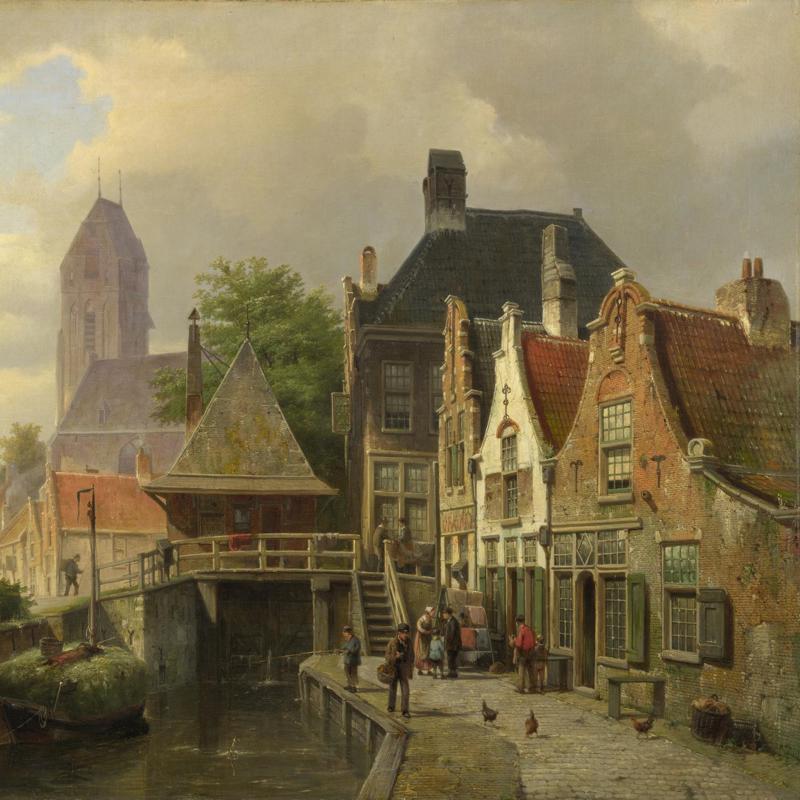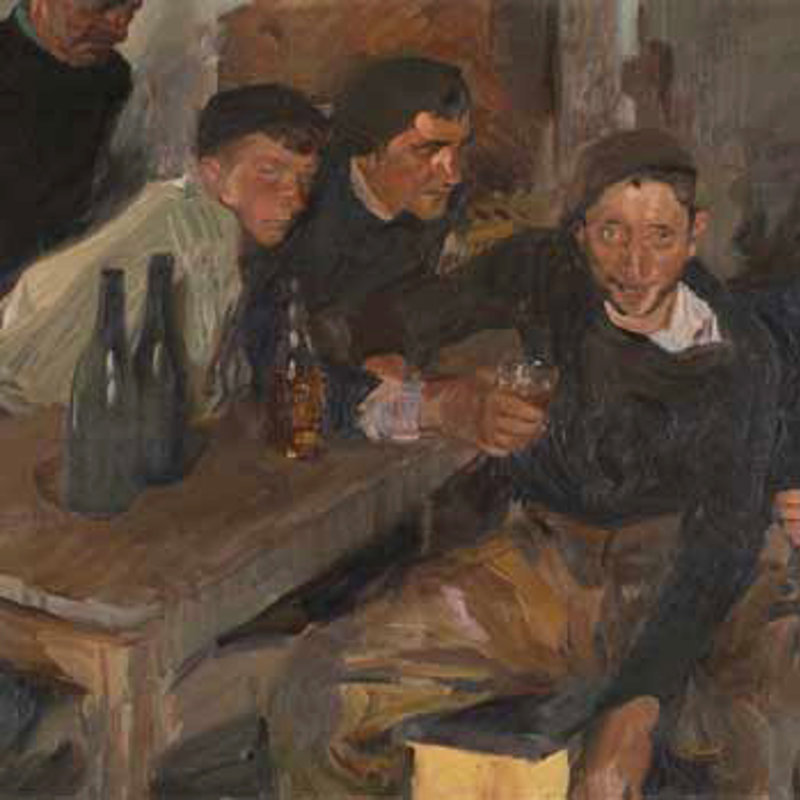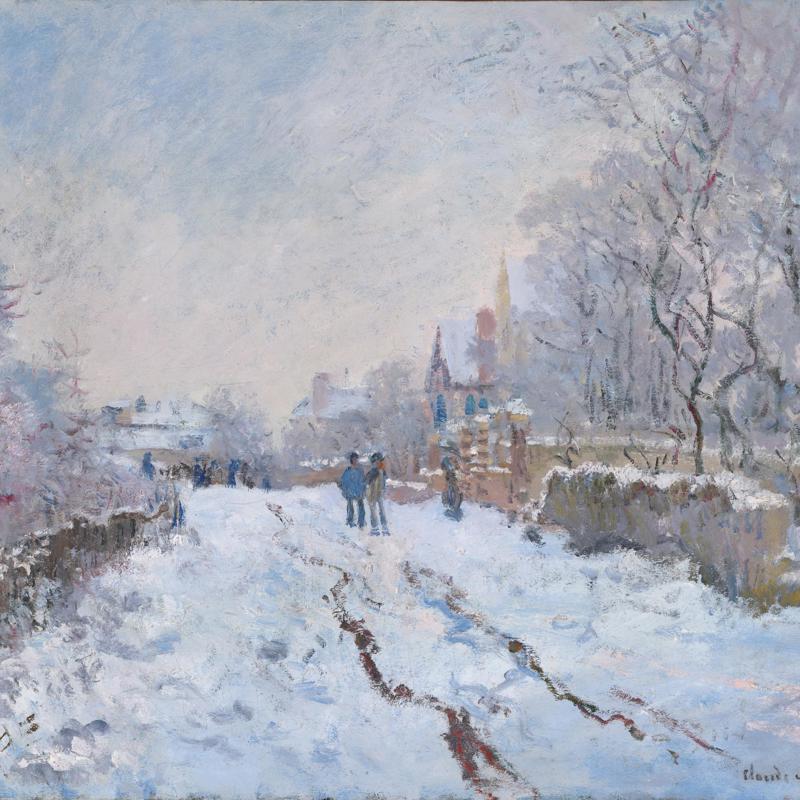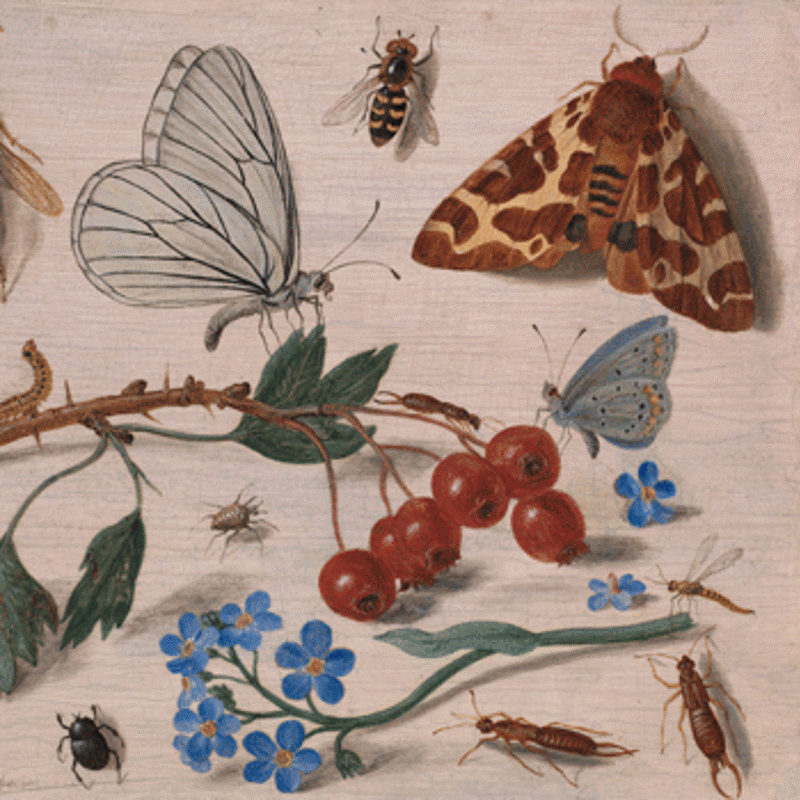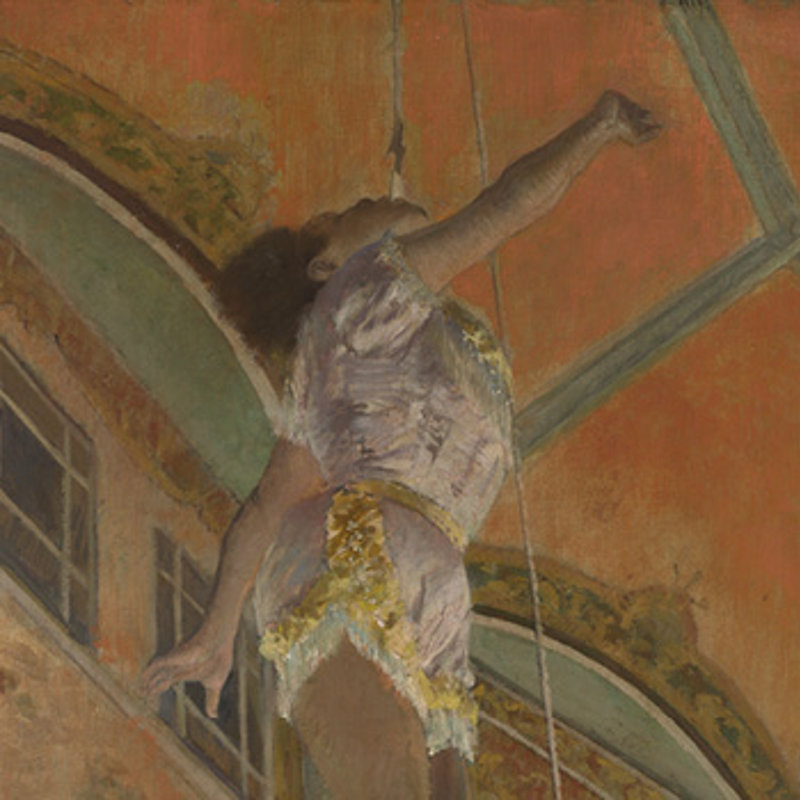In a big painting like this, with so many figures and so much action, it can be hard to know where to start to look.
Amidst all the figures, however, we are drawn to the one figure who looks out at us – a little girl, wide-eyed and frightened. She holds some grapes between her fingers, and appears to beckon to us, as if drawing us into the scene. She looks as if she has something urgent that she needs to say to us.
We can also take in the two distinct areas to the painting: the large colourful and brilliantly lit area at the front of the painting, and a darker, more turbulent area behind. The lighter area is dominated by a group of figures, who form a pyramid structure. Pyramids (being hard to knock over), are traditionally used in art to convey a sense of stability. Indeed, this is the side of peace and harmony.
At the pinnacle of the pyramid is Pax, goddess of peace. Pax breastfeeds her son Plutus, god of wealth. This is symbolic of the notion that wealth is born of peace – that peace is the necessary condition for prosperity to flourish. Around them are many trappings of wealth and harmony. A goddess is draped in the most luxurious, green embroidered silk. She carries treasure – golden goblets, pearls and a ruby brooch. Behind, another goddess sings and dances, shaking her tambourine – a sign of music and the arts. Below Pax, a satyr holds a cornucopia (horn of plenty) with all the fruits of the harvest. Satyrs are associated with greed, but rather than lusting after the fruit and vegetables, he offers it to the children. Likewise, the leopard toys with the food, but is not devouring it. His hunger is satiated, in this time of plenty.
Behind them, something much darker is going on. Minerva, goddess of wisdom – identifiable by her helmet – is in battle with Mars, god of war – identifiable by his red cape, red hair and ruddy complexion (symbolic of bloodshed, anger and, of course, the red planet). You can almost hear the clash of shields and the screams and wails of the harpy, a rapacious monster, at the top right, and the fury, a goddess of vengeance, through the swirling storm.
Who is winning this battle? Minerva or Mars, wisdom or war? Well, Mars appears on the backfoot, his dagger positioned awkwardly behind him. He will soon be pushed back and the storm clouds driven away. Blue skies will reign again.
As a painter (and art dealer) to monarchs, rulers and the elite of Europe, Rubens was well-placed to serve on diplomatic missions. In 1629–30, he was sent to England as an envoy for Philip IV, King of Spain. He was tasked with securing an exchange of ambassadors to negotiate peace between the two countries. 'Peace and War' was intended as a gift to Charles I, King of Great Britain. The themes of this allegory, the benefits of peace and the destructiveness of war – reflect the aims of his political mission.
To a 17th-century audience, the group of children would have stuck out, as if they were wearing t-shirts and baseball caps today. Unlike the Classical figures, they wear contemporary costume. In 1629, Charles I's wife, Henrietta, gave birth to their first child. With this painting, Rubens appeals to the King as a family man. He asks, what kind of world do you want your children to be brought up in? A world of peace or a world of war? It is the question posed by the little girl, who appeals to us in sheer terror, and it is a question that remains relevant to our world today.
With thanks to Nikon, Digital Content Partner.



